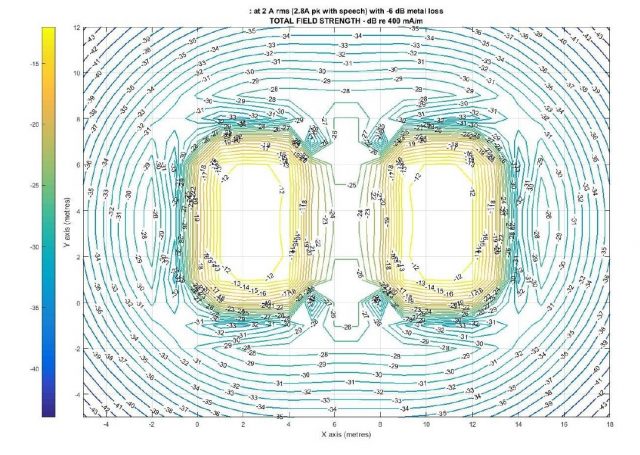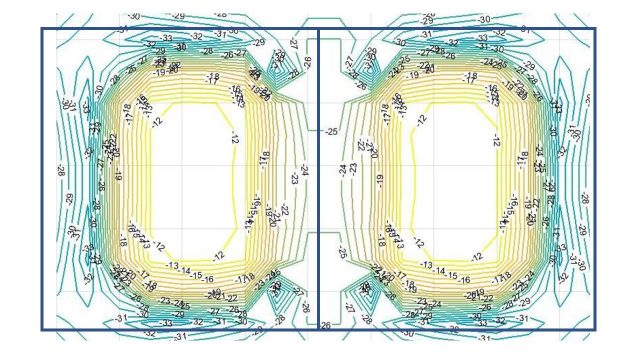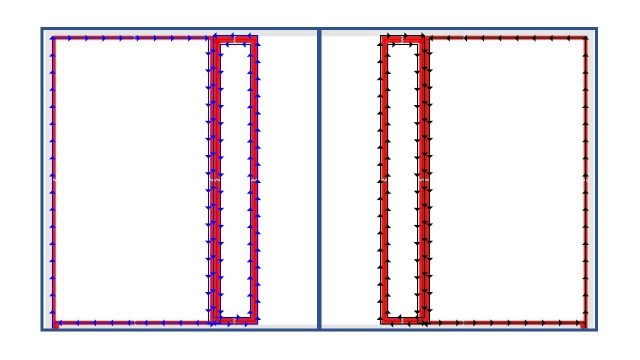
This image shows the level of detail we undertake to ensure induction loop installations are ‘just right’. It shows the field strength of 2 copper wire induction loops to be installed into 2 adjacent classrooms. The objective is to ensure that each induction loop signal can only be picked up by hearing aids in that specific classroom. We want to avoid the signals being picked up from the classroom next door.
Before continuing it is worth briefly explaining that there are 2 types of hearing loop system;
- The copper wire system is what we are considering in this image and works directly with hearing aids.
- The IR set up needs anyone wearing a hearing aid to wear another device as a ‘go-between’ connecting the IR signal to the hearing aid.

This image shows the same field strength diagram and to help clarify things the classroom walls have been added. The simple blue rectangles show the classroom walls. What we want to see is as much ‘orange’ as we can within the classroom. It is very important that the ‘orange’ in one classroom does not overlap into the next. The ‘orange’ area is where the hearing loop signal can be picked up. The ‘blue’ area in the image above is where the hearing loop signal cannot be ‘picked up’.
By modelling to this level of detail we are able to generate precise plans of exactly how and where to install the copper wire as shown in the image below.

So what?! Well, if you are relying on the hearing loop either as a pupil or a teacher communicating with a pupil this is pretty significant…
This hearing loop field strength model was created Tom Simonds, solutions architect at Involve Visual Collaboration – he’s a very clever chap. This is how we ensure that copper wire hearing loops are installed correctly and work wonderfully.
Recently I was in a church in which a copper wire hearing loop had been newly installed to replace an older system. Unfortunately for them it had not been configured well and was feeding back through the actual PA giving rise to all kinds of undesirable effects for everyone. It sounded like aliens were landing on the roof. The signal from the hearing loop was bleeding into a transducing pickup on a guitar being used on stage by someone leading the congregation singing songs. This could have been avoided with a little more planning as to how and where the copper wire was installed.
Sometimes the installation of a copper loop set up is price prohibitive due to complex technical demands. An IR system is the alternative where by the student will need to wear a receiving device. Not so long ago the microphone the teacher had to wear and receiver the students had to wear were pretty cumbersome and both looked like they had come straight off a WW2 bomber. I have some first-hand experience of this as a former teacher. IR systems ‘have come a long way’ – fortunately they are a little more discreet these days.
As an ex-teacher, I know Involve are well placed to support you with hearing loops in an educational setting. This is because we are able to combine my teaching experience along with Tom’s expert technical knowledge. If you want us to assist you with any problems you’re experiencing then we can put our heads together and come up with an outstanding plan for that works for you, contact Involve here.
